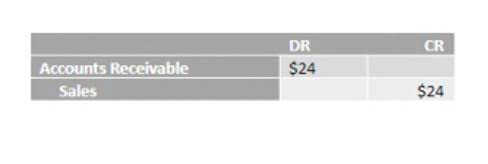
A contra account is a type of account that is used to offset another account. It is a separate account that is linked to another account, and it is used to reflect the opposite of the balance in that account. Contra accounts help maintain the accuracy of financial records, provide transparency in reporting, and allow for proper tracking and analysis of specific transactions or events. Utilizing contra accounts in financial accounting has several significant advantages that enhance financial transparency and enable more effective financial management. Similarly, if the parent account lists entries as debits, the contra account will appear as a credit. They are crucial for compliance with generally accepted accounting principles (GAAP) and international financial reporting standards (IFRS).
Understanding Contra Accounts in Financial Management

This account is used to reduce the balance of accounts receivable to reflect the amount that is unlikely to be collected. Another example is the contra inventory account, which is used to write down or collect obsolete inventory. The allowance for doubtful accounts – often called a “bad debt reserve” – would be considered a contra asset since it causes the accounts receivable (A/R) balance to decline.

How are contra accounts recorded?
They also help to provide a clear picture of a company’s financial health and performance. Contra equity accounts are used to offset the balance in an equity account. For example, if a company has an equity account for treasury stock, they would also have a contra equity account to offset the balance in the treasury stock account. Explore the purpose and types of contra accounts in financial statements, Accounting for Technology Companies enhancing clarity and accuracy in financial reporting. At Invoiced, we provide a suite of solutions that work together to make managing your invoicing, accounts receivable, and accounts payable seamless and easy. To convert your invoice management efforts to an electronic format that can easily share data with other financial systems, businesses can leverage Invoiced’s E-invoice Network.
- Although contra-asset accounts have credit balances, they do not appear in liabilities or equity.
- This account offsets the gross revenue to reflect that not all sales result in final transactions.
- For example, if a company has a revenue account for sales returns and allowances, they would also have a contra revenue account to offset the balance in the sales returns and allowances account.
- Contra asset accounts have a balance that is opposite from the regular asset accounts.
- By creating the Sales Discount account, the company can provide context to their revenue figures and better understand trends in the marketplace.
- By recording reductions in a separate account, companies can get better insights into their actual accounts.
Where Does Accumulated Depreciation Appear on the Financial Statements?
An example of a contra liability account is the bond discount account, which offsets the bond payable account. A contra liability account is not classified as a liability, since it does not represent a future obligation. When posting transactions, one would credit the contra asset account to increase its balance, which decreases the net value of the corresponding asset. Sales and Sales Returns and AllowancesBusinesses also deal with sales returns and allowances, which are recorded in a contra revenue account.
- Another example is dividends declared but not yet paid, temporarily reducing retained earnings until payment is made.
- This account only relates to a company’s intangible assets rather than tangible.
- This account helps companies present a more accurate accounts receivable balance on the financial statements.
- The discount on bonds payable is a notable example, reducing the face value of bonds issued below their market value.
- Balance sheet readers cannot only see the actual cost of the item; they can also see how much of the asset was written off as well as estimate the remaining useful life and value of the asset.
- Treasure stock is a good example as it carries a debit balance and decreases the overall stockholders’ equity.
- This adjustment is vital for investors and analysts evaluating a company’s debt obligations and interest expenses.
- Well, contra asset accounts give us a clearer picture of the real value of assets.
- It’s often paired with fixed assets like vehicles, buildings, and equipment.
- Rather than pay this cost up-front and tie up a significant chunk of capital, Show-Fleur makes this purchase on credit with a 90-day due date after invoicing.
This also ensures accurate financial statements, which is essential for meeting regulatory requirements and maintaining the trust of stakeholders. In bookkeeping, a contra asset account is an asset account in which the natural balance of the account will either be a zero or a credit (negative) balance. The account offsets the balance in the respective asset account that it is paired with on the balance sheet. Below is the asset account debit balance and accumulated depreciation account credit balance on the balance sheet. contra asset account examples Have you ever wondered why certain asset accounts on a company’s balance sheet have a negative balance? Since assets indicate worth rather than deductions, it seems contradictory.

Understanding Contra Liability Accounts
When a listed company buys back its own shares from the open market, it records the transaction by debiting the treasury stock account. A company may take the decision to buy back its shares when management feels the stock is undervalued or because it desires to pay stock dividends to its shareholders. For you to show the deprecation in the balance sheet, you need a contra account which will hold the accumulated value of depreciation and latter, offset with machinery account. Here ‘Accumulated Depreciation’ is a contra account and following are the journal entries to be recorded in the books of accounts for first year to account depreciation. Instead, the existence of contra-asset accounting accounts for companies will differ based on a company’s requirements. A contra-asset account is an account that opposes the balances of other asset accounts.


